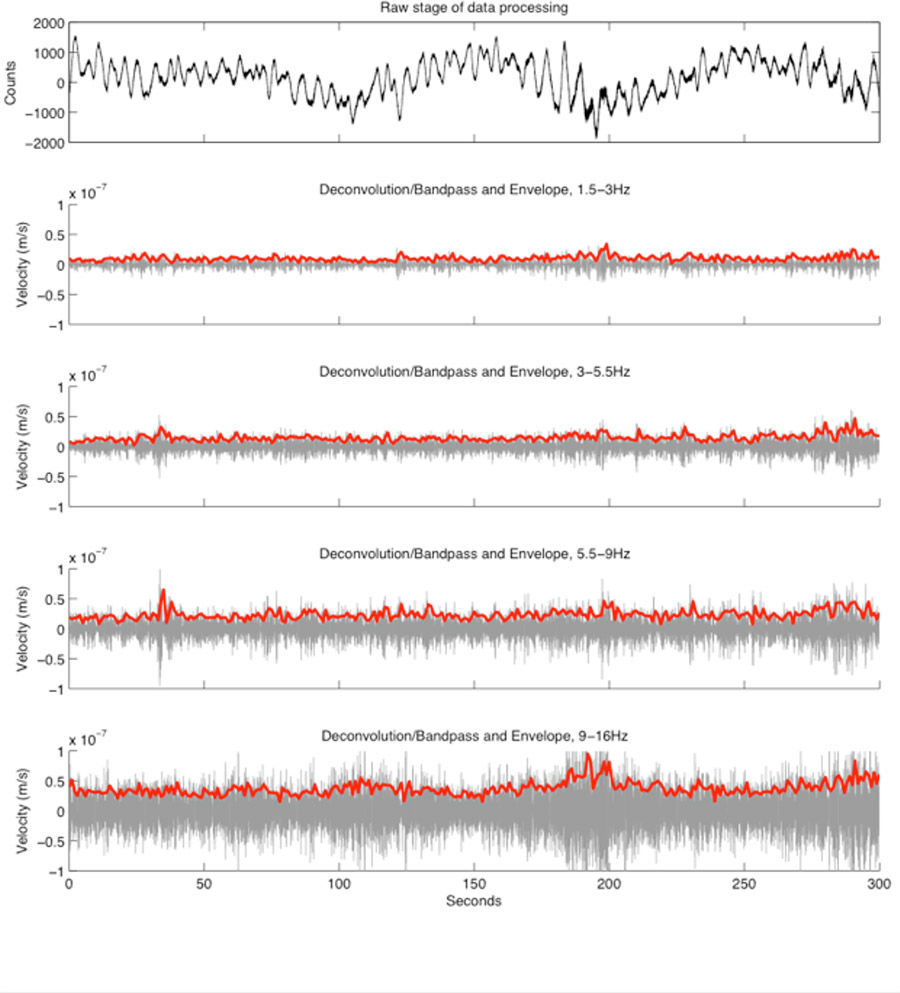The new University of Washington Continuous Envelope Functions
The University of Washington (UW) Continuous Envelope Functions data product, developed by Ken Creager and Carl Ulberg of UW, is a new member of the IRIS DMC data products. This data product is a collection of continuous envelope functions that could be used to search for tectonic tremor and/or for data quality analysis. Envelope functions are computed automatically at the UW Earth and Space Sciences Department utilizing selected portions of the IRIS DMC waveform archive and are distributed by the IRIS DMC.
Currently the continuous envelope functions are available for the following 5 networks:
- 7D (2011- July 2012, Cascadia Initiative Community Experiment-OBS component)
- AV (2012, Alaska Volcano Observatory)
- UW (2003-2005, Pacific Northwest Regional Seismic Network, no eastern stations)
- XE (1999-2001, Broadband Experiment Across Alaskan Range)
- XY (2010, Chile RAMP)
In 4 frequency bands:
- 1.5-3.0 Hz
- 3.0-5.5 Hz
- 5.5-9.0 Hz
- 9.0-16.0 Hz
For each pass band and time segment, the envelope functions are available as SAC files with their cutoffs at day boundaries and/or data gaps. Technical description of this data product and the processing used to generate it are available at:
http://ds.iris.edu/ds/products/envelopefunctions
These envelope functions (SAC files) are available for download via IRIS DMC’s Searchable Product Depository (SPUD):

by Manoch Bahavar (IRIS Data Management Center) and Chad Trabant (IRIS DMC)






